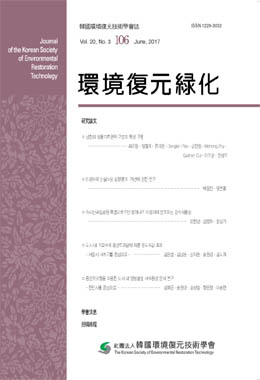The problem of the population number of honeybees that is decreasing not only domestically but also globally, has a great influence on human beings and the entire ecosystem. The habitat of honeybees is recognized to be superior in urban environment rather than rural environment, and predicting for habitat assessment and conservation is necessary. Based on this, we targeted Cheonan City and neighboring administrative areas where the distribution of agricultural areas, urban areas, and forest areas is displayed equally. In order to predict the habitat preferred by honeybees, we apply the Maxent model what based on the presence information of the species. We also selected 10 environmental variables expected to influence honeybees habitat environment through literature survey. As a result of constructing the species distribution model using the Maxent model, 71.7% of the training data were shown on the AUC(Area Under Cover) basis, and it was be confirmed with an area of 20.73% in the whole target area, based on the 50% probability of presence of honeybees. It was confirmed that the contribution of the variable has influence on land covering, distance from the forest, altitude, aspect. Based on this, the possibility of honeybee`s habitat characteristics were confirmed to be higher in wetland environment, in agricultural land, close to forest and lower elevation, southeast and west. The prediction of these habitat environments has significance as a lead research that presents the habitat of honeybees with high conservation value of ecosystems in terms of urban space, and it will be useful for future urban park planning and conservation area selection.




